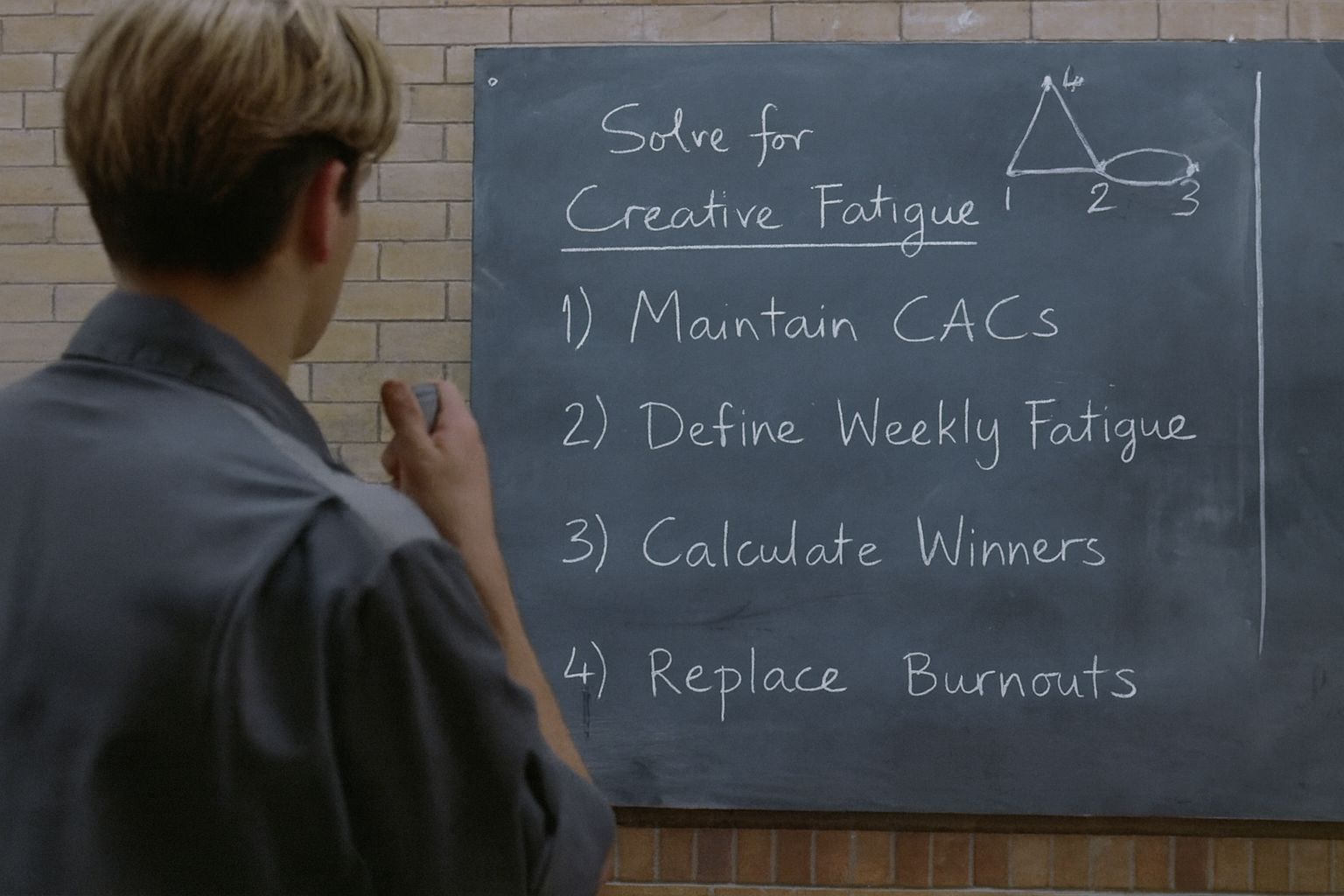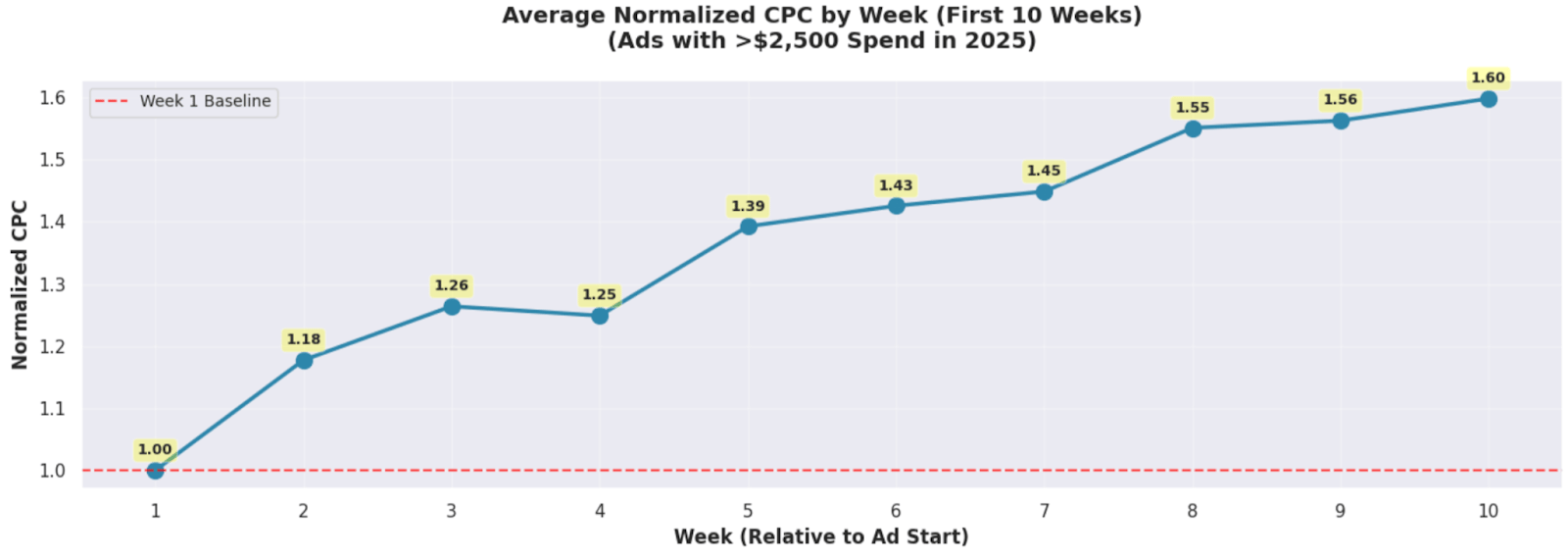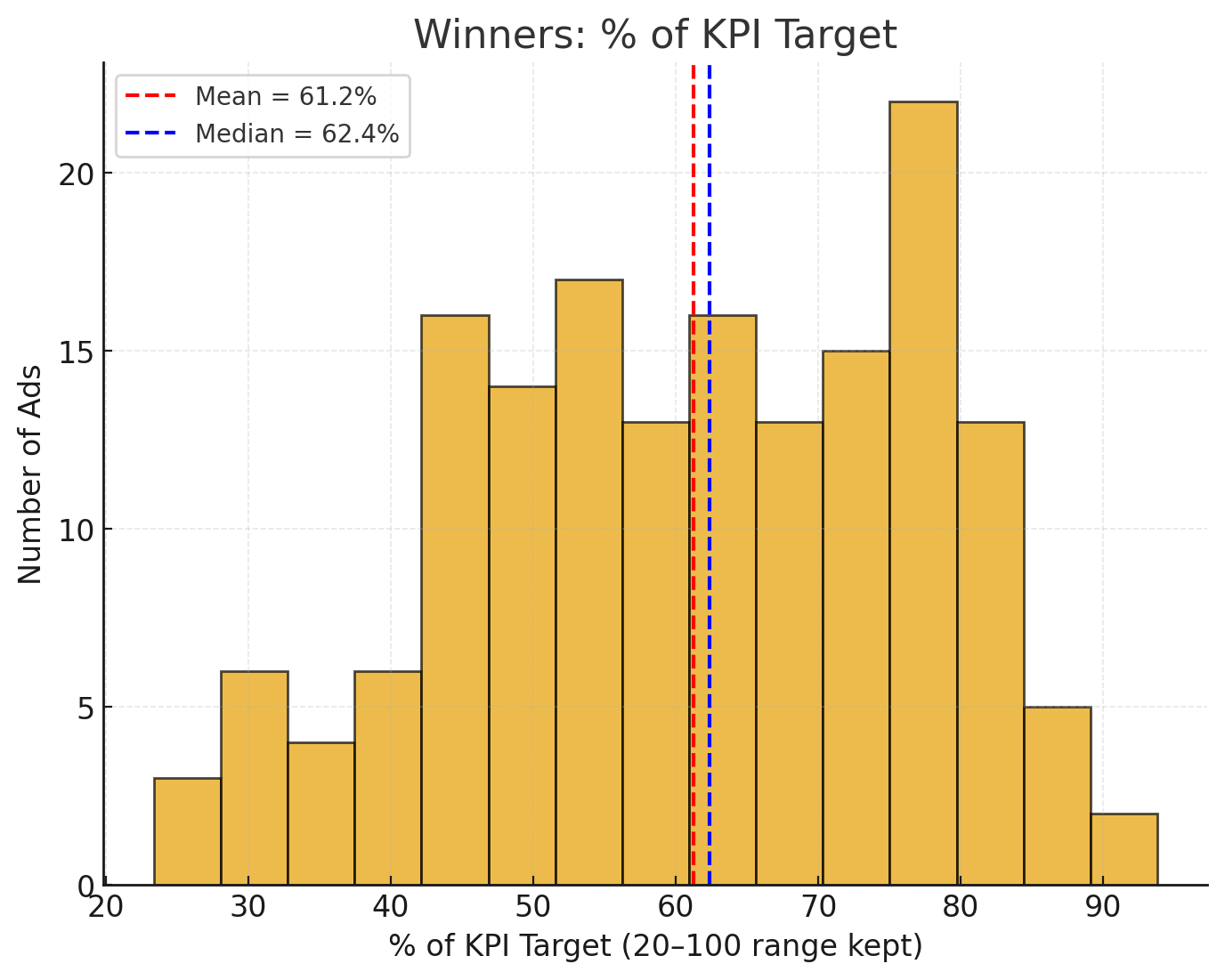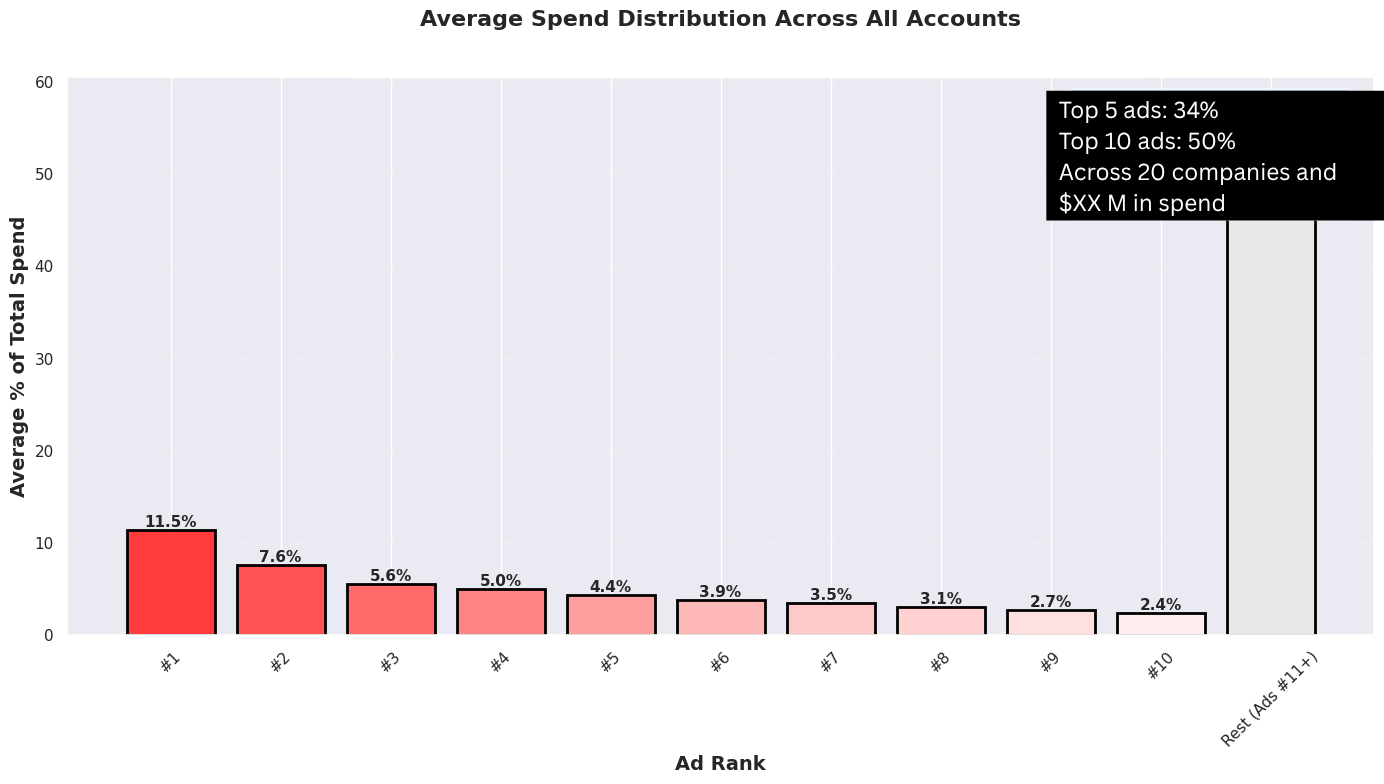- NewForm AI
- Posts
- The Creative Calculator: How Many Ads Should You Be Making?
The Creative Calculator: How Many Ads Should You Be Making?
Creative fatigue and minimum viable creative production

Part of a series on making sense of paid ads from first principles.
As creative increasingly drives ad-account performance, it is the thing to ultimately understand. Best practices are still being discovered in real time, and we’re trying to make sense of it all.
This is a follow up to our first essay, A Mathematical Exposé of AIGC. It continues the same pursuit—building mathematical structure around a practice that still runs mostly on instinct.
How many ads should you be making? How does that scale?
We get this question all the time. So much so, we built a calculator to answer that. For those who fell asleep in math class, you can skip to the calculator at the end.
For those who care about the logic behind it, read on.
First, you need to define what your optimization objective is. Broadly, creative production can be used to:
Maintain CACs at a current scale (prevent creative fatigue)
Lower CACs to hit some specified CAC target that still hasn’t been hit
Increase scale at current CACs
Each of these carries a different mathematical exercise. The simplest to compute is the first. The second two are less mathematically clean, but we’ll touch on them in later essays.
The goal of this essay is to establish a rigorous formulation of creative fatigue from first principles and empirical data across our portfolio.
Computing creative fatigue
A lot of people misunderstand creative fatigue. It’s important to note that creative does not fatigue over time, it fatigues under spend pressure. The same creative can last two years or two weeks. It depends on how much spend pressure you put behind it each day.
Fatigue is ultimately a function of frequency over time, which is itself a function of CPMs, your reachable audience, and Meta’s ability to prospect new audiences. Creative fatigue is really creative-audience fatigue.
Empirical data

You’ll notice the second week is the biggest jump. That's because that’s when the ad scales the most, it gets discovered during week 2 or 3 and there is a natural fatigue to this ad. What is interesting is the fatigue that kicks in post week 5, which is a consistent and predictable ~3%. To be clear, even after the initial 25% jump, the average winner is still quite efficient. In our data set, a winner is on average 62% of the KPI in testing.

Ignore the left tail end, as most of those ads were just accounts that had a really bad starting point. Excluding the tail gives ~70%. So even after the 25% scale fatigue, we’re looking at something that’s beating KPI by a decent bit
Back to fatigue. For ad accounts at scale, we see ads fatigue 10-20% week over week due to high frequencies. At small scales, ads can last months if not years while keeping decent CACs. Fatigue climbs exponentially with frequency (for software/app advertisers, 2.5+ in a week is usually when things get bad).
Broadly, we can think about long-term creative fatigue as a function that is proportional to frequency on your total reachable audience.

This assumes that meta has the ability to continually prospect new audiences for you, which we can write a whole another essay about.
Where exp is the exponential function, k is a constant that we can empirically compute to be around 0.03 based on our client analysis. For example, say you have a generic fitness product. Your addressable audience in the U.S. is roughly 100 million people who care about fitness. Assuming a normal CPM of 10, if you spend $1M per week, your weekly fatigue rate would be:

If you spent $1M per month (like 250k/week), your fatigue rate would be around 3.9%.
Computing minimum replacement volume
If our goal is to maintain current CACs and scale, then we simply need to replace our winners. But how many "winners" do we have at a given time? And how many of them do we need to replace in a given month?
For the sake of this analysis, we will call something a true “winner” if it has at least 2% SV (spend volume). Not all winners are created equal, and some will go on to take as much as 30% SV.
So, how many ads are true winners at a given time? Looking at our data over the last quarter, this looks to be about 15 assets.

Lets say you are spending 500k/week at a low CPM (10) and have a general audience (100m). From our fatigue formula above, we are looking at a 5% weekly fatigue rate.

Given a weekly creative fatigue rate f, we have a monthly decay of

So, we need to replace about 15 × 0.2 = 3 assets per month. It’s helpful to think about creative fatigue this way because the calculation above is an average across all creatives. Some will sustain for years; others will burn out within two weeks. Thinking about the half-life of creative is more helpful. For very high-scale advertisers, they essentially need to replace all 15 true winners every month, with the exception of unicorns.
Hit rate
The next question is your hit rate: how many ads do you need to replace the three that burned out?
This depends on how good you are at creative. It’s our job to make winners, so our hit rate will be skewed. Across all accounts, our hit rate in testing is 8-9% (in testing). For the most competitive ad accounts, it’s closer to 2%. For easier accounts or those we are quite familiar with, we may hit 15%.
To add, not all creatives scale. Just because you hit KPI in testing doesn’t mean you’ll capture more than 2% SV. Only about one in two winning ads in testing will graduate to become a true winner and pick up meaningful SV.
In our case, this computes to only 1.5–4% of ads becoming true “winners.” For this account, that translates to a ceiling of 3/.015=200 ads per month and a floor of 3/.04=75, just to maintain efficiency at the current scale.
If your goal is to increase scale while keeping the same CACs, the calculation is very different as mentioned above. We will go over this in a future essay. But I’ll spare you the wait and tell you the number is ~double the ranges stated above for aggressive scaling.
Calculator
Creative fatigue is simply a function of audience size and how much of that audience has seen your ad. That rate can be calculated. So what does this look like for you? We built a calculator you can check out here.